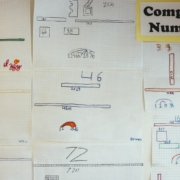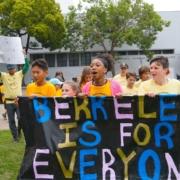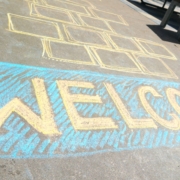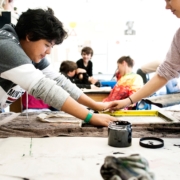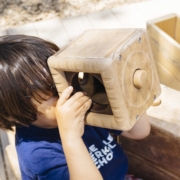by Kate Klaire, Director of Civic Engagement
Student pathways for civic engagement often start with noticing how environments, beings, and communities are doing – how their situations differ, recognizing whether they are thriving, and wanting to find ways to support them.
At The Berkeley School, we know that civic engagement requires rigorous goal-setting, planning, action, and reflection, and we know that children at all grade levels are capable of all of these. TBS students develop a civic and social awareness about the community around them, appreciate the impact of their choices, and hone their sense of agency in order to engage a changing world that requires their empathy, active participation, and effective leadership.
Civic Engagement through Student Leadership
With such a strong focus on civic engagement The Berkeley School was invited to become a member of the global Ashoka changemaker network in 2014. As an Ashoka School, TBS is dedicated to cultivating a spirit of activism within our student body. Students in 5th through 8th grade have the opportunity to join the Ashoka Student Leadership Team, a group facilitated by the Director of Civic Engagement that meets regularly to plan and enact changemaking initiatives that impact their local and global community.
Ashoka students lead change by:
- Identifying problems and opportunities
- Imagining a way forward that benefits everyone, not just a few
- Investigating solutions and modes of support
- Adapting and making changes
- Bringing others into the action
Ashoka student leaders started the 2018-19 school year with the student-driven goal of impacting the issue of homelessness in Berkeley. They met with educators, activists, and government officials to understand the ways Berkeley and Oakland have currently work to address homelessness. Students developed an ongoing partnership with Berkeley City Council member Cheryl Davila and worked over the course of the school year, built a relationship with folks living at the Sea Breeze encampment down the street from our University Avenue Campus. They made meals, held necessity drives, offered trash pickups for the encampment. Their main initiative was to advocate for the encampment to get the same regular trash pick-ups other Berkeley residents get by attending city meetings and promoting education within our school community to influence their advocacy.
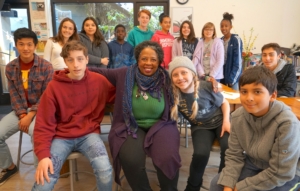
Students from our 2018-19 Ashoka Leadership Team with District 2 City Councilperson Cheryl Davila.
Members of the Ashoka Leadership Team mentor their younger peers in a group we call Ashoka Jr. comprising students in grades K-4 who are also interested in taking the lead as changemakers. After visiting the Berkeley Recycling Center on a field trip, Ashoka Jr. made a plan to raise funds for Peoples Breakfast Oakland by collecting recycled materials on campus and turning them in to the center for money. Over the course of 6 months, the students collected 384 cans and bottles, a haul which amounted to just $50. The exercise taught the Ashoka Jr. students what an incredible effort it took to raise just $50 and considered that, for some unhoused folks, this is their only income.
At the close of the 2018-19 school year Ashoka students led their classmates in an “End Homelessness Now” walkathon and rally in Downtown Berkeley’s Civic Center Park to help keep the issue of homelessness at the top of mind.
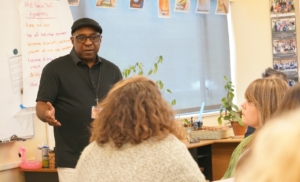
We opened the 2019-20 school year with a visit from Donald Frasier, Executive Director of Building Opportunities for Self Sufficiency (BOSS), who came to speak to our faculty about emergent issues affecting the unhoused and discussed ways to grow our partnership, including support for the Children’s Learning Center.
In September, we welcomed 2013 TBS grad and current Northwestern journalism student Maggie Galloway back to speak about her experience interning with KQED investigating the complexities of homelessness in the Bay Area.
Maggie presented at an all-school assembly and then worked with the Ashoka team to build their understanding about common biases associated with our unhoused neighbors. She then led them through an activity in small groups to generate ideas about ways they could support unhoused individuals with pets, as well as how to educate the community.
Civic Engagement through Service Learning
Transitional Kindergarten students on our Early Childhood Campus were introduced to the complexities of food access through a service learning unit that combined their study of and partnership with the Berkeley Food Pantry with a yearlong focus on showing kindness. Students aged 4 and 5 were led through these five stages of service learning:
Investigation – The Director of the Berkeley Food Pantry came by the Transitional k classroom to talk about who they serve and why. Drawing from this visit, as well as from other discussions, the students presented what they learned to their peers in the other five classrooms on the Early Childhood Campus.
Planning & Preparation – Students thought about a meaningful action that could make a positive impact and meet a real community need.
Action – They spearheaded a food drive that resulted in 194 pounds of goods for local neighbors. They delivered their donations to the pantry and learned how to help stock the shelves.
Ongoing Reflection & Assessment – They reviewed together, noting how much and what types of food were needed (canned items, pasta & rice, no candy) and how food access needs remained, even after their action.
Demonstration & Celebration – By sharing the results of the food drive collection and offering thanks to those who contributed, students honored the fact that they couldn’t have made the impact they made without the help of others.
While students already had an understanding of the fundamental need for food to survive, the food pantry study helped them to realize food dependency impacts the way people live and helped them grasp the concept that some people have access to food while others don’t — and most importantly — we all must act to remedy that.
Civic Engagement through Project-Based Learning
7th graders tackled the same issue of food access through a collaborative interdisciplinary Project-Based Learning unit between their health class and humanities class. Students were invited to answer this guiding question: “How can we make healthy and nutritious foods more accessible in our community?” In order to take action to this end, students researched what makes food healthy and nutritious, what are the modern day barriers to access, what are the historical legacies of these barriers, and for whom these barriers exist. They covered the foundational elements of this project by examining a recent study undertaken by PolicyLink and The Food Trust titled The Grocery Gap: Who Has Access to Healthy Food and Why it Matters and hearing from guest teacher, Asia Hampton from Phat Beets Produce, an Oakland-based grassroots organization that aims to create a healthier, more equitable food system in Oakland and beyond by providing affordable access to fresh produce.
Additionally, students travelled to the Alameda County Community Food Bank to volunteer and to learn about why making healthy food more accessible in our community is so vital to the health and success of Alameda County residents.
To culminate their unit, students designed a digital map of our neighborhood’s food sources to share with the larger community, called FindYourGreens.org. In order to do this, students created an evaluation tool to assess the variety and cost of healthy foods at neighborhood food sources, as well as proximity from public transportation to indicate accessibility.In the art studio, they designed and produced tote bags to promote the FindYourGreens.org site within the community.
As a private school with a strong, outward-facing mission, we have a particular need to walk our talk. We believe that the way we educate our students will have long-term benefits for local and global communities alike.
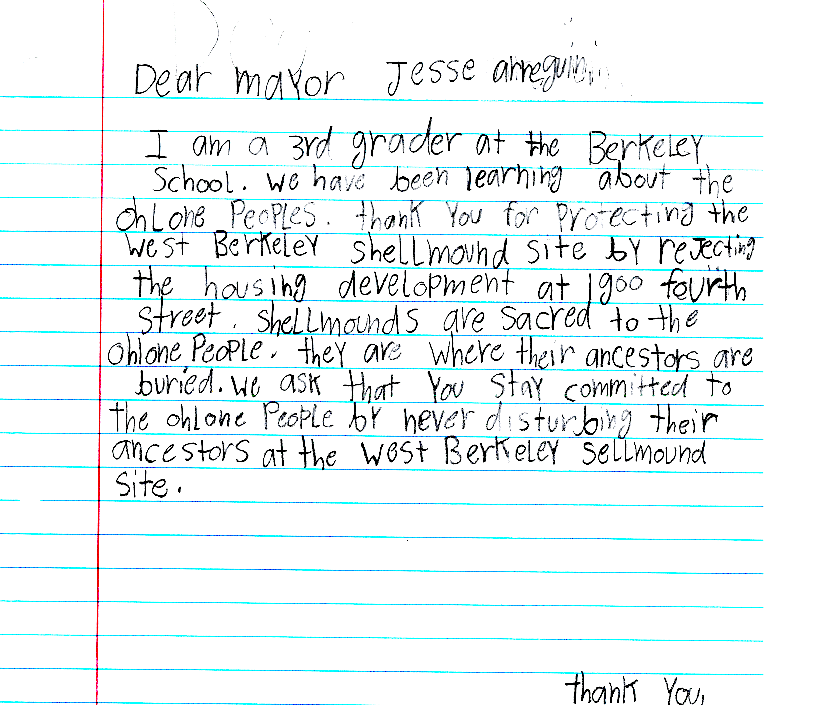
 Visit Shellmound.org to learn more about actions you can take to protect Ohlone land. Acknowledgment does not stand in for relationship and action. If you live on Ohlone Land, we invite you to learn more about the voluntary shuumi land tax via the Sogorea Te Land Trust.
Visit Shellmound.org to learn more about actions you can take to protect Ohlone land. Acknowledgment does not stand in for relationship and action. If you live on Ohlone Land, we invite you to learn more about the voluntary shuumi land tax via the Sogorea Te Land Trust.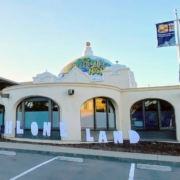
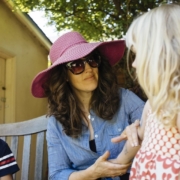
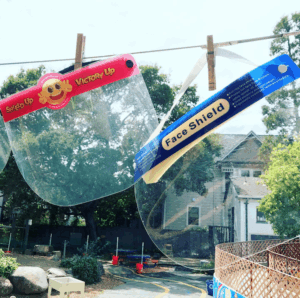 Today I went into my classroom to collect a few personal items and make sure things are in order. As I walked around campus I found myself feeling demoralized. Newly purchased child and adult sized face shields hang ready for use when singing (or, I imagine, the equally common preschool vocal activity, crying). Their presence is a stark reminder of the times we are in.
Today I went into my classroom to collect a few personal items and make sure things are in order. As I walked around campus I found myself feeling demoralized. Newly purchased child and adult sized face shields hang ready for use when singing (or, I imagine, the equally common preschool vocal activity, crying). Their presence is a stark reminder of the times we are in.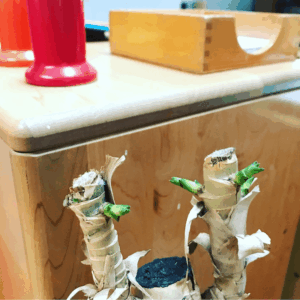 A few weeks later I came by and discovered that it had been moved into the full sun and was scorched to a crisp. I moved it back into the shade, cut back all the dead leaves, gave it a little water and left it for the fates to decide. Well, today as I was packing up, I checked on it and noticed lots of little green signs of life. The hope I was looking for! One year from now I will report back, hopefully, the plant and I will both be better for the hard pruning.
A few weeks later I came by and discovered that it had been moved into the full sun and was scorched to a crisp. I moved it back into the shade, cut back all the dead leaves, gave it a little water and left it for the fates to decide. Well, today as I was packing up, I checked on it and noticed lots of little green signs of life. The hope I was looking for! One year from now I will report back, hopefully, the plant and I will both be better for the hard pruning.








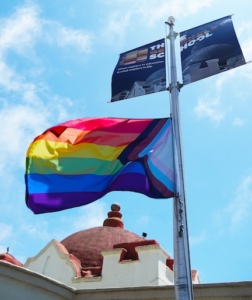 In 2018, GSA students educated our school community about the
In 2018, GSA students educated our school community about the 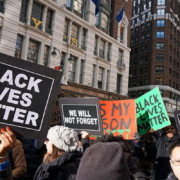

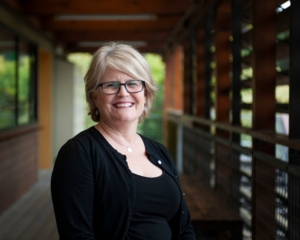 When interviewing a candidate for our K-2 Information Literacy position this week, we asked, “Why TBS?” She replied that in listening to the promotional statements among several peer schools, our message stands out as authentic and she sees it demonstrated in the warmth of our community.
When interviewing a candidate for our K-2 Information Literacy position this week, we asked, “Why TBS?” She replied that in listening to the promotional statements among several peer schools, our message stands out as authentic and she sees it demonstrated in the warmth of our community. 